Your cart is currently empty!

Animal Safety with Kids
Kids and animals go together like peanut butter and jelly. There are so many amazing benefits of raising kids around animals, including teaching them about responsibility, empathy, compassion, patience, and love. But that doesn’t mean that there aren’t safety concerns for both the child and the animal. Today, Leslie Alvis, Ohio homesteading mom of four (and daughter of vets) is here to address all your potential concerns regarding animal safety and children. In this post, Leslie addresses what the safety risks are around animals, how to teach children to handle and approach animals, how to choose the right pet for your family and take care of it, as well as issues regarding pet hygiene and allergies. This post is full of amazing info, so saddle up!
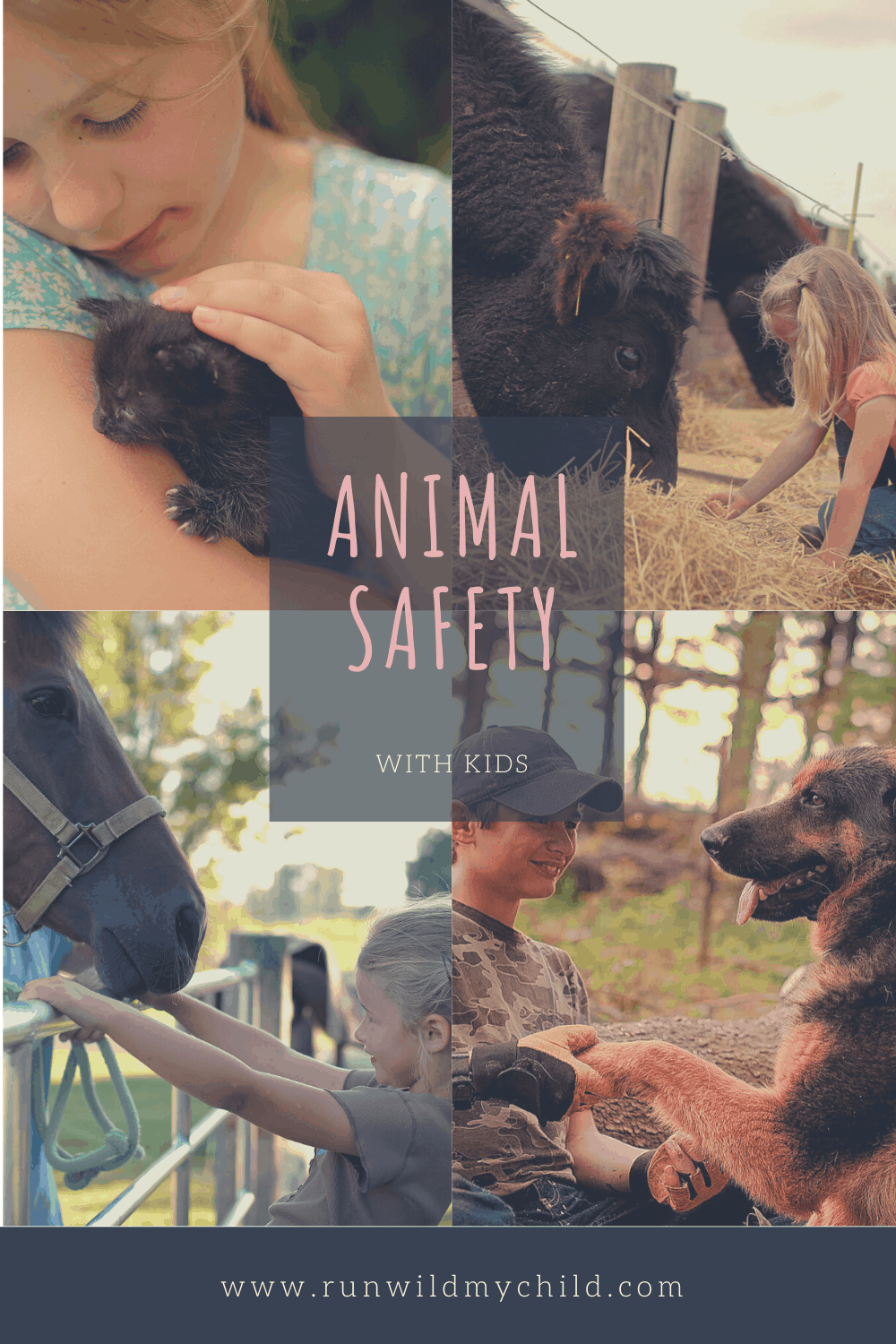
The bond between children and animals
I believe children are born with an interest in living, wiggling, breathing creatures. The animals that surround us are delightful and exciting. Children are drawn to them, many times fearlessly. I’ve watched my toddlers walk up to a huge cow and reach out their hands to a bovine head that’s as big as their whole body. I’ve watched them clutch tiny critters that could bite or scratch. The magnetism between children and animals seems to be almost universal. And there are a multitude of benefits included in letting our kids build relationships with animals.
As parents, though, safety concerns about our kids and animals sometimes loom large. Animals can be big. They can bite and kick and scratch, more unpredictably than a toddler. We all have heard horror stories of dogs hurting children. And animals aren’t really all that hygienic. They can trigger allergy problems, carry diseases, and spread parasites. Now that I think about it, there are a lot of ways an animal can potentially harm a child! So, how do we encourage our kids’ natural love for animals while helping them learn animal safety? We’re here to help.

Always around animals
I’ve always been around animals. Both of my parents are veterinarians. They met in veterinary school and had pets before they had children. Many of my earliest memories involve animals—from pet mice to vet calls on Standardbred horse farms. I grew up in my dad’s veterinary clinic, helping mop floors, “assisting” him with exams and surgeries, and being exposed to all kinds of animals. We always had dogs and cats in our home, and often livestock outside as well. I was raised to love all animals and yet also to have a healthy respect for safety around animals. I knew very well that a dog could bite or a steer could drag me.
My husband also grew up with all kinds of pets. As newlyweds, we picked up our first puppy on our way home from our honeymoon. Animals have continued to play a bigger and bigger role in our family life as we are building our country homestead. We now have to think through animal safety from a parental perspective. How can we teach our own children to interact with animals safely? What are the guidelines we grew up with that have guided us through all kinds of animal relationships?
Kids and pets
Research proves that animals have a wonderful effect on children. I love how this article highlights the many benefits of having pets with kids. Animals do bring some safety risks, but there are so many incredible benefits and lots of ways to make the right choice for your family. If one kind of animal concerns you, there are literally dozens of other kinds of pets—from goldfish to horses, with every size and color and texture you can imagine.
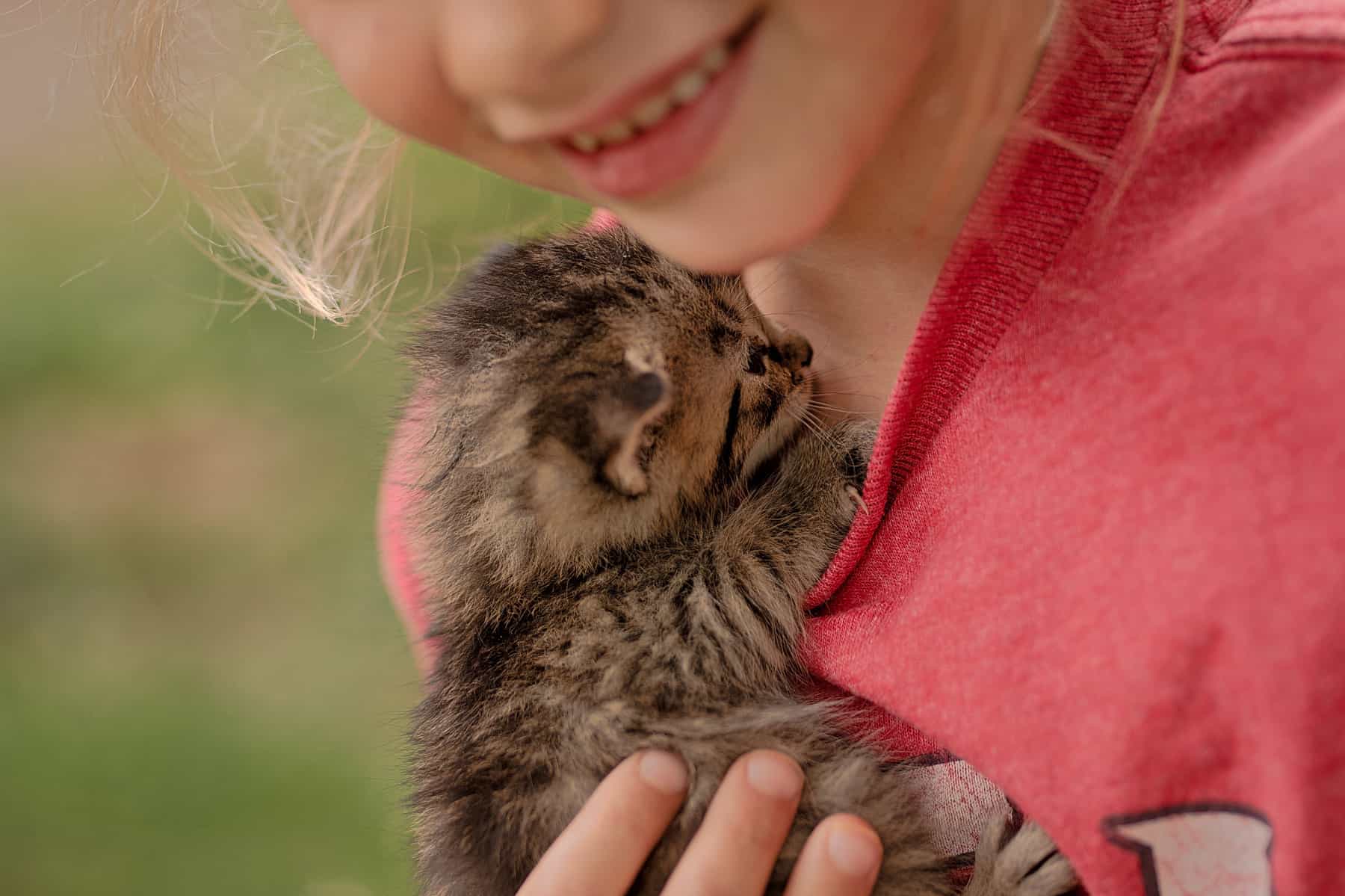
Risks vs. benefits of animals
I look at kids’ safety with animals in a similar way to risky play, like tree climbing and swinging. Are there risks involved? Sure there are. But the benefits to my children are greater than the risks. Animals are used for therapy because their love and acceptance are invaluable to people of all ages, especially children. Caring for animals teaches children responsibility, gentleness, and so much more. In my mind and experience, the benefits far outweigh the risks.
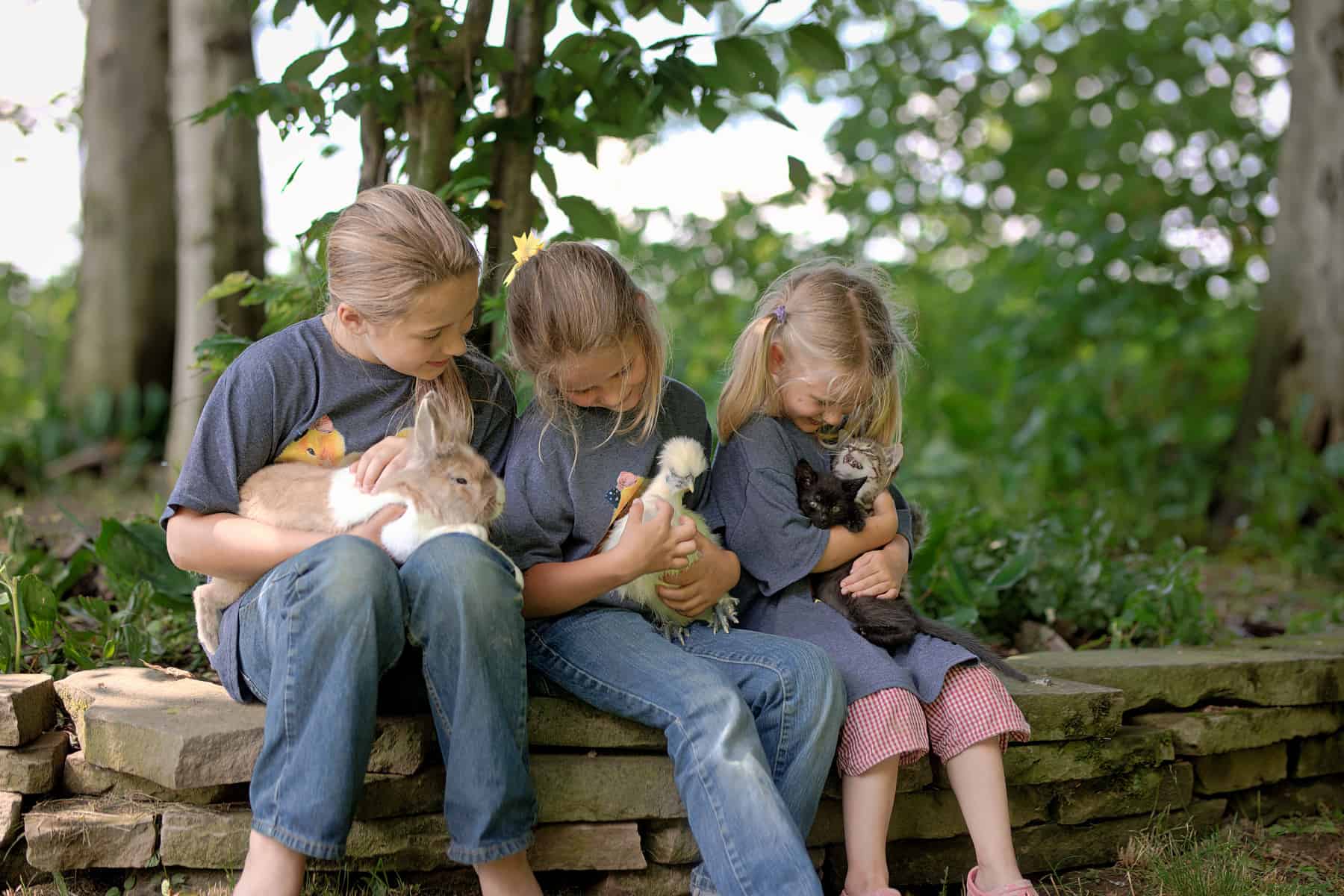
Basic child safety tips around animals
With that said, I’d like to cover some basic animal safety with kids. Please understand that I am not a doctor or a veterinarian. You should always seek out the advice of your medical professional if you have any medical concerns for your child. But here are some common-sense, general guidelines to help you allow your children to be involved with animals while still being safe.
Probably the most major area of animal safety with kids is teaching them how to treat animals correctly. Unfortunately, animals can be unpredictable. They are limited in their intellect and may respond by instinct when they are annoyed or feeling threatened. Amazingly, many animals instinctively treat children with great patience and gentleness. However, especially if an animal has been provoked or mistreated (in the past as well as the present moment), you cannot guarantee that it won’t nip or scratch a child. But there are things you can teach your kids that will help them know how to interact with animals safely.
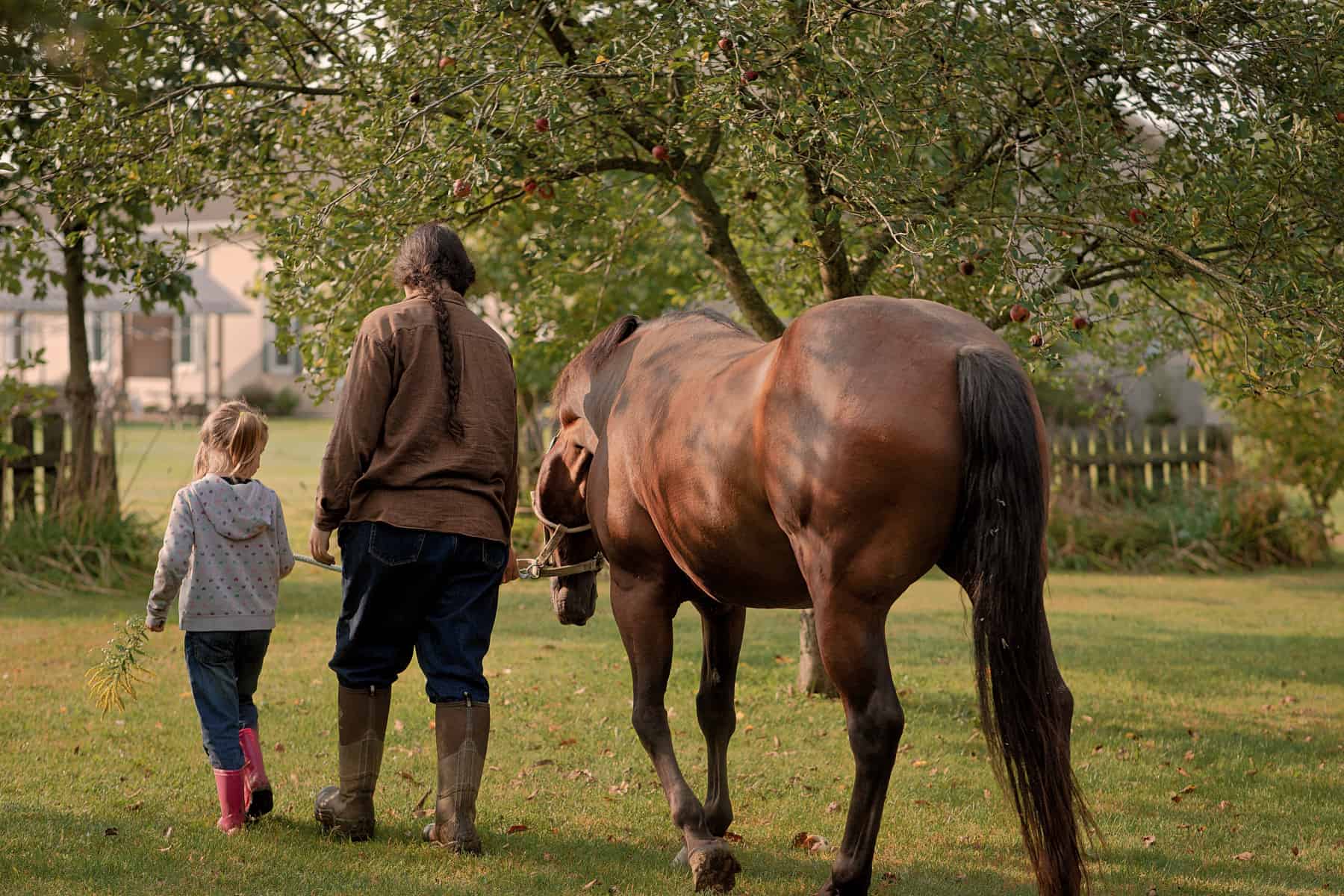
Treat animals gently
The first thing you need to do to ensure your child’s safety with animals is to teach your child to treat every animal with kindness and gentleness. All animals deserve to be respected as living creatures. They should be handled gently and spoken to with calm voices. And animals generally will respond to gentleness with gentleness. If your child can move slowly and speak softly, he/she will avoid many problems with animals.
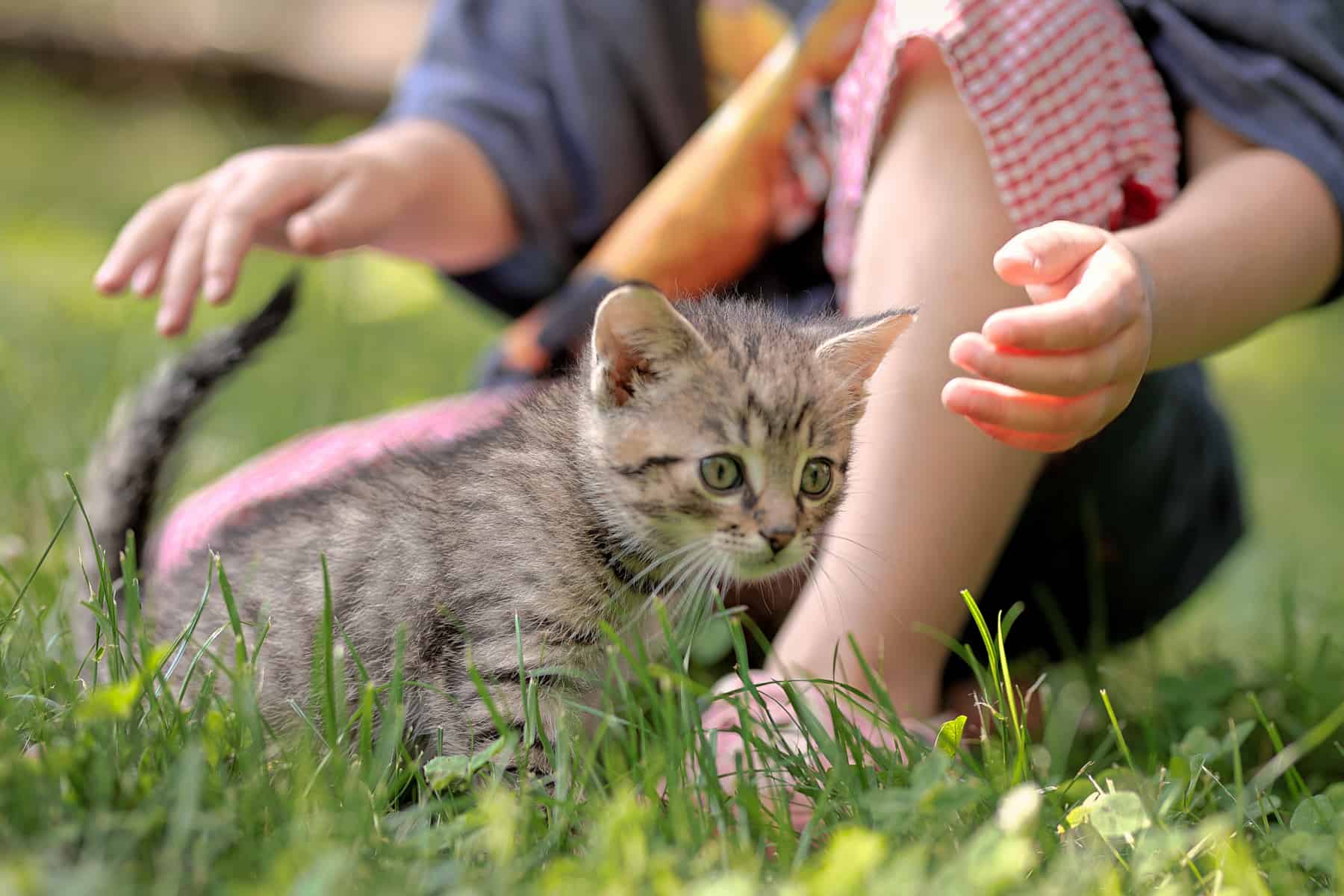
Go soft and slow
Although this behavior doesn’t always come easily to kids, it is a good discipline for them to learn. We try to reinforce it with our little ones, especially with new pets or other people’s animals. Any time kids get excited, they tend to forget to move slowly and speak softly. I try to be watchful for this behavior, and for the animal’s response to it. “Look, sweetie, the dog is hiding because you’re being loud and it’s scaring him. He’s not used to you. Try to talk really softly and see if he comes out.” It’s a good learning experience for children to realize that their behavior has an impact on animals, and to see how an animal will respond to loving and gentle behavior.
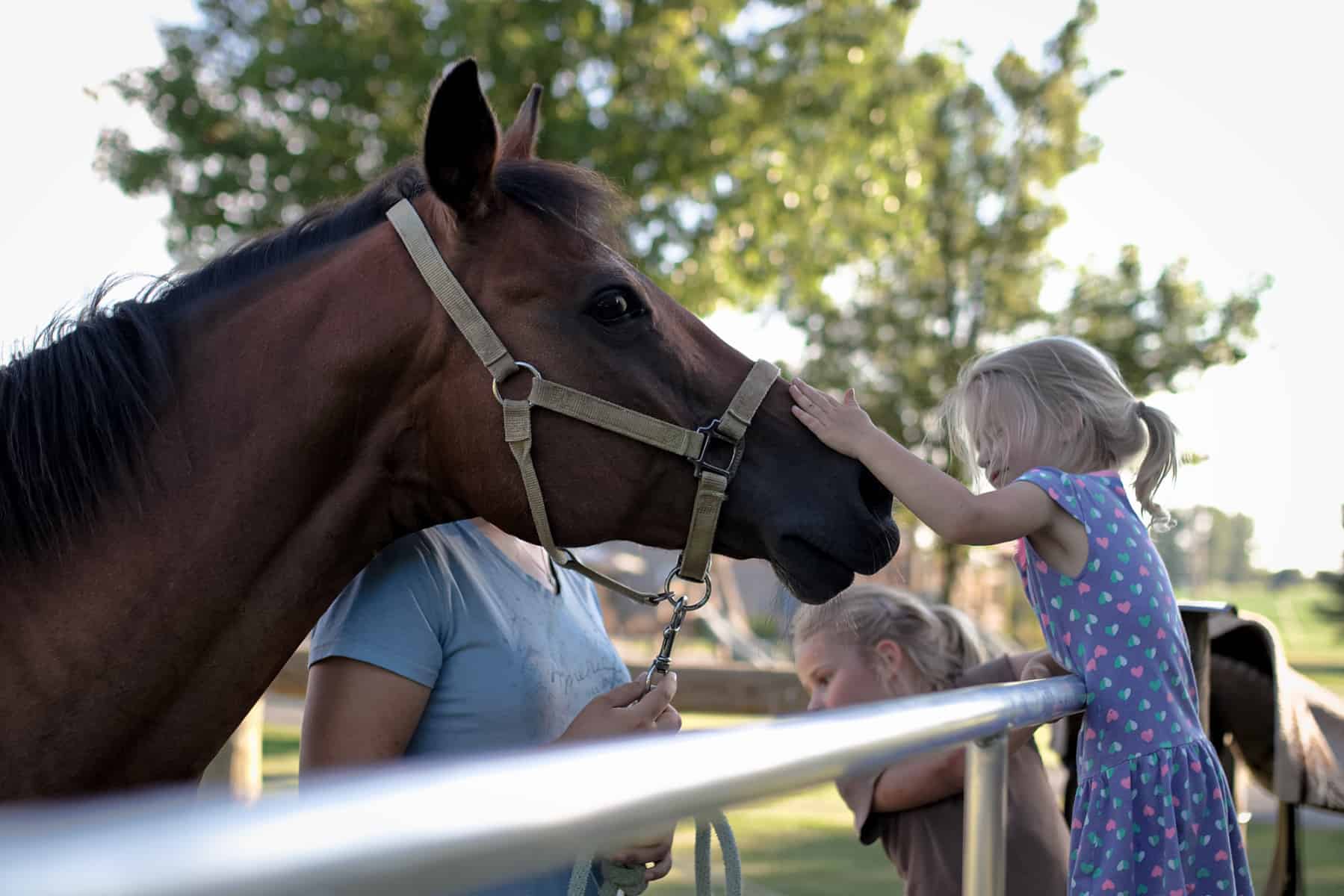
Animals are different
Every individual animal is unique. It’s really important to teach kids to be respectful of how an animal responds to them. Maybe you have a dog in your home, and it’s used to your kids’ boisterous ways. (We do! Our dog is 100% accustomed to every bit of childish noise and behavior. They can shout and lie on top of him and brush his fur and he puts up with it all.)
But then you go to someone else’s home, and their dog is terrified of all the commotion. In that situation, it’s our job as parents to teach our children how to calm down and respect that animal. This is both important as a rule of kindness, as well as for animal safety. Any animal who is ill at ease is much more likely to snap at a child.
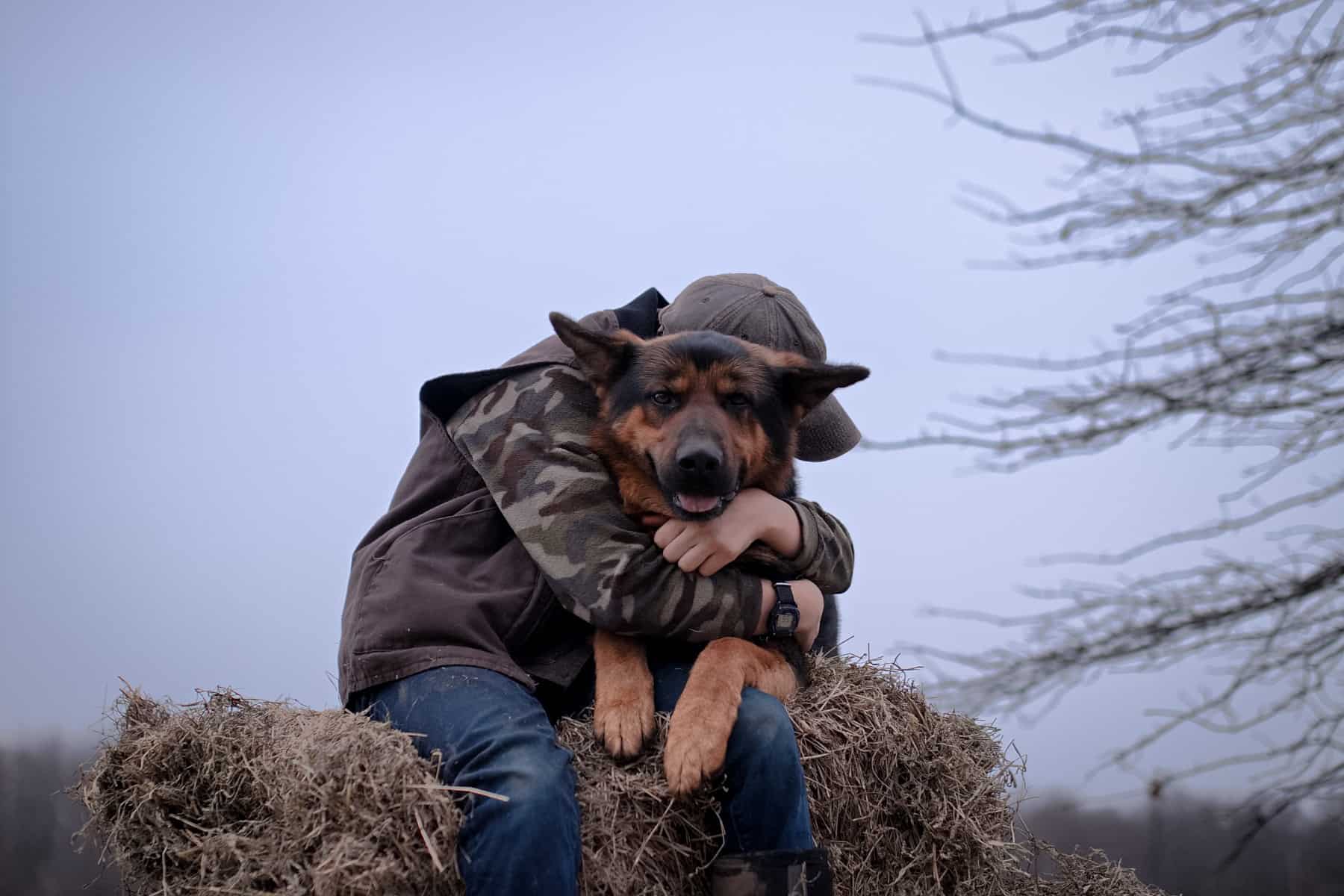
Different kinds of animals
Not all animals like to be treated the same or respond the same way to people. If you’re familiar with animals, you realize that a dog and cat are not created equal. A dog may love a vigorous tummy scratch, while a cat may hate it and scratch the person administering it. And there are even differences between the same types of animals – what doesn’t bother one dog may severely upset another. Just like people, animals are all unique and come with their own personalities, likes, and dislikes. This is a good lesson for kids to learn.
There are different guidelines for how to safely handle cats, birds, horses, and dogs. Not only their size, but also their temperament demands different treatment. If we want to teach our kids safety around animals, we have to teach them how to safely interact with different species.
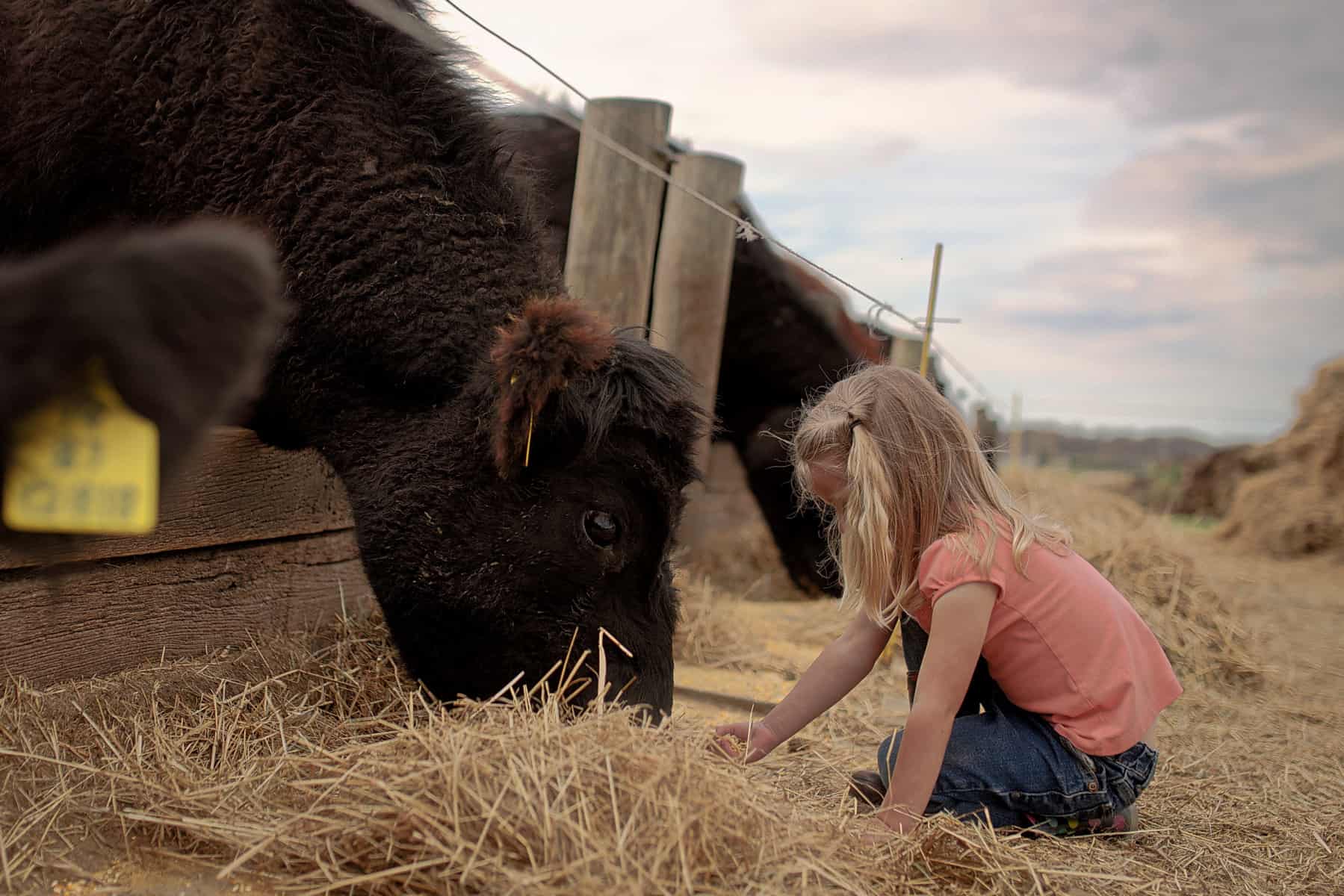
Safety with other peoples’ pets
If you have a cat in your home, you’ve probably already taught your children how to be safe and gentle with their own pet. When you go to a friend’s house and they have a pet, take time to ask them how that animal likes to be treated. Ask them what their rules are for interacting safely with their pet. Make sure your child is listening and paying attention to this conversation.
Those guidelines will give your child an excellent place to begin getting comfortable with a new kind of animal, whether it’s a pet bird, a hamster, or a large animal. Following the owner’s instructions will also help keep your child safe around an unfamiliar animal.
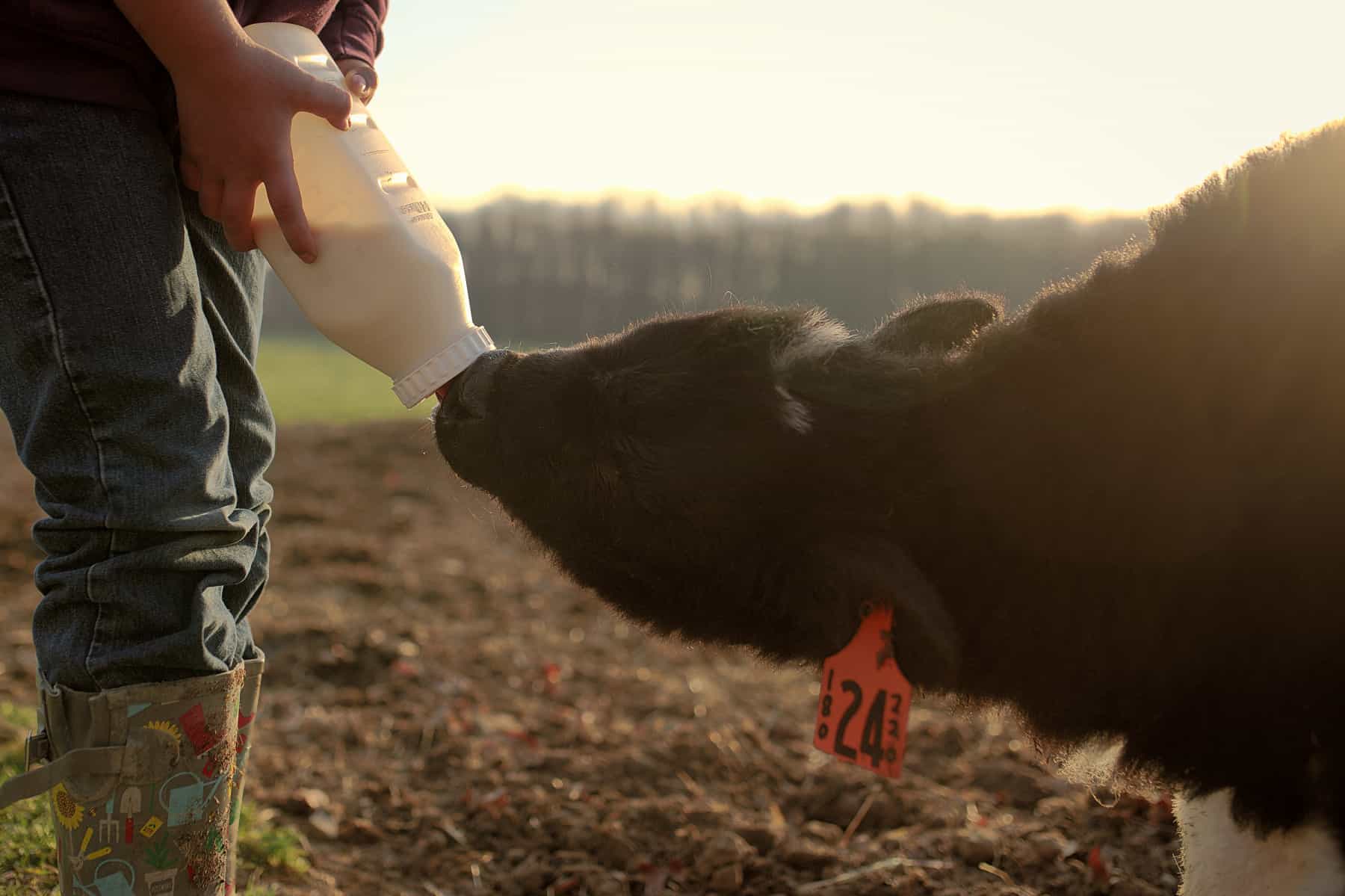
We have extended family members who have horses, so I try to make sure my kids are learning from their aunt and grandma how to approach, pet, groom, and ride each horse. My parents own beef cattle, and at their farm, I remind my children to listen to Grandpa’s instructions around the cows. Another aunt has pet birds, large and small. She’s wonderful at letting the children interact with the members of her aviary, but I have to remind them to listen and be respectful that each bird behaves differently. One small parrot may let them pet or feed her, but the other will bite if they reach their fingers out to her. As long as they listen to their aunt’s instruction, both they and the birds are safe.
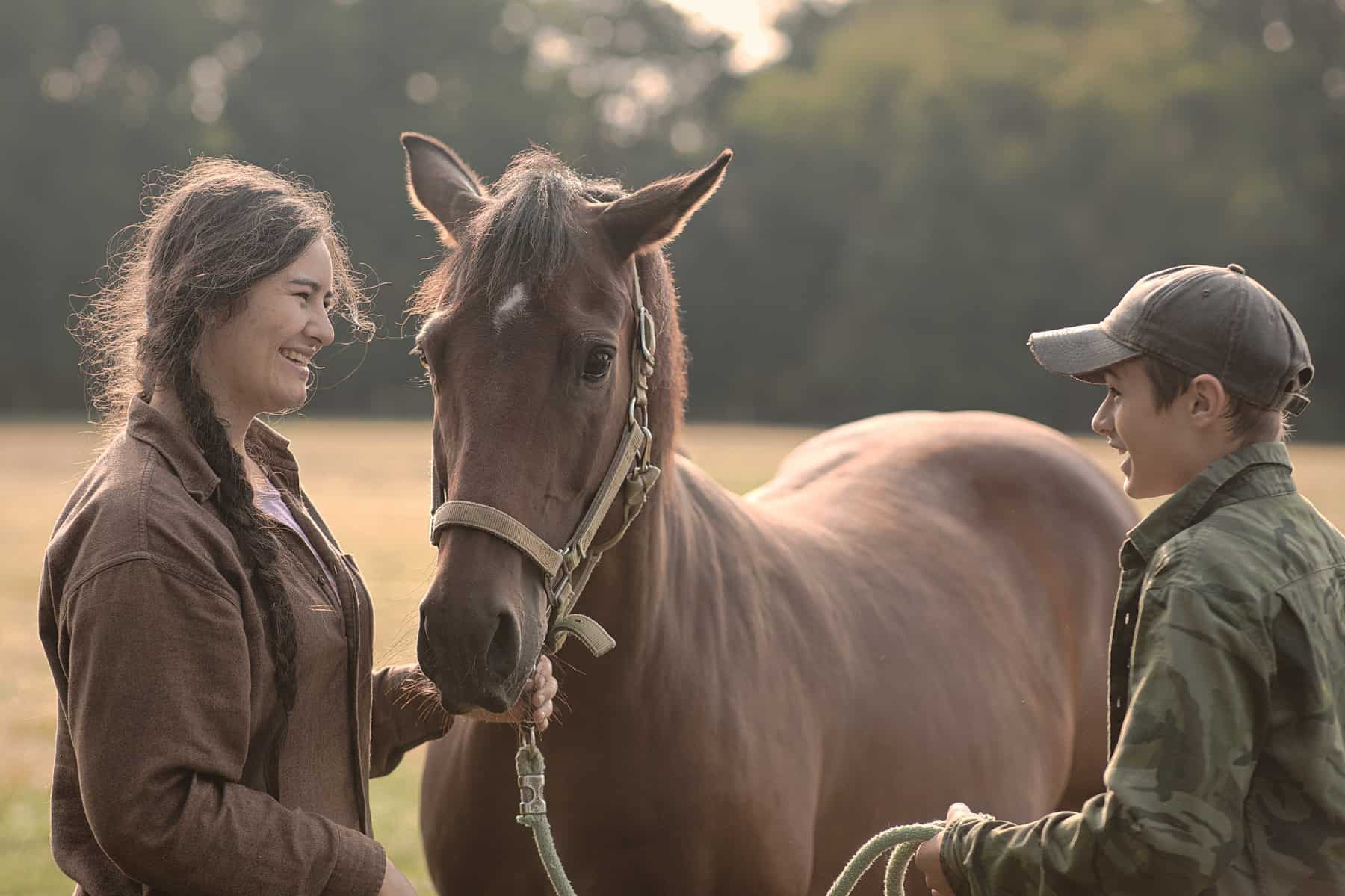
Safety with a new pet
When you’re getting a new pet, especially a kind of animal you haven’t had before, it may bring up some new safety concerns. How do we teach our kids how to be safe with an animal we don’t know much about? Thankfully, there are as many resources available as there are pets! When we got our son a bearded dragon, we knew nothing about lizards.
We turned to the library and the internet to help educate him. We checked out several books and found some YouTube channels for him to watch. Not only did he learn how to properly care for his new pet, but he also learned how to handle and interact with it safely.
Now we’re doing the same thing for our seven-year-old, who persistently begged for a parakeet for her birthday. Having knowledge about their unique pets makes them comfortable with their animals and they feel a strong sense of responsibility to handle their charge with care and safety.
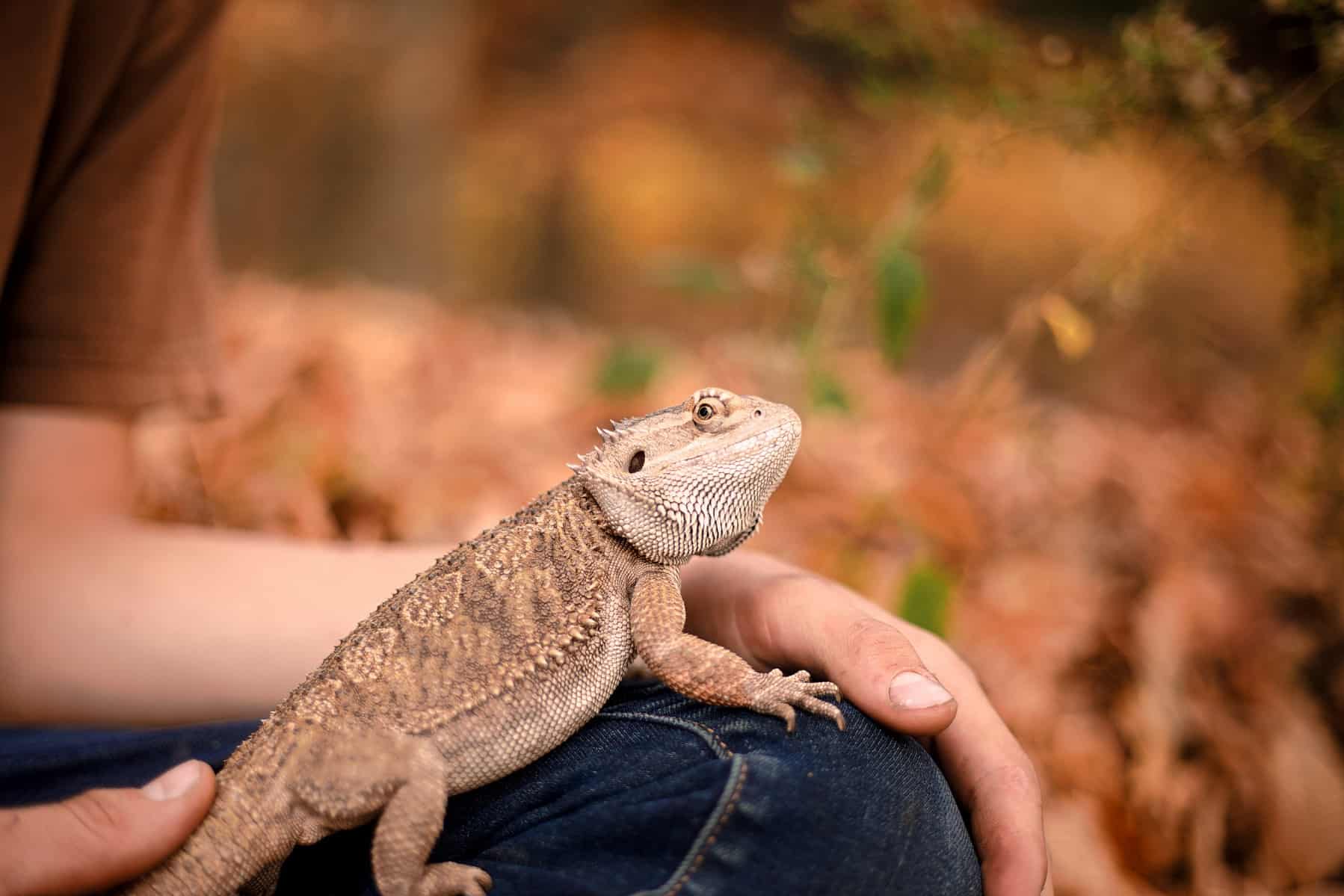
Consider your pet’s history
If you are bringing a new pet into your home, you should make sure the animal has been treated well before coming into your family. If you’re buying a young animal from a breeder, ask if the pet has been socialized and is used to children. You can also ask them for pointers on helping your new pet and your kids adjust to each other.
Although rescuing animals is a wonderful mission, there are some safety concerns when you’re adopting a rescue animal into a family with small children. Many times rescue animals have been mistreated in the past and have triggers that a child can innocently set off. If you choose to adopt an animal from a shelter or rescue, talk to the workers about your family situation. They may be able to help match you with an animal whose temperament or history will work for a family with children. Depending on your children’s ages and maturity, they may also be ready for the challenges of caring for a previously mistreated animal.
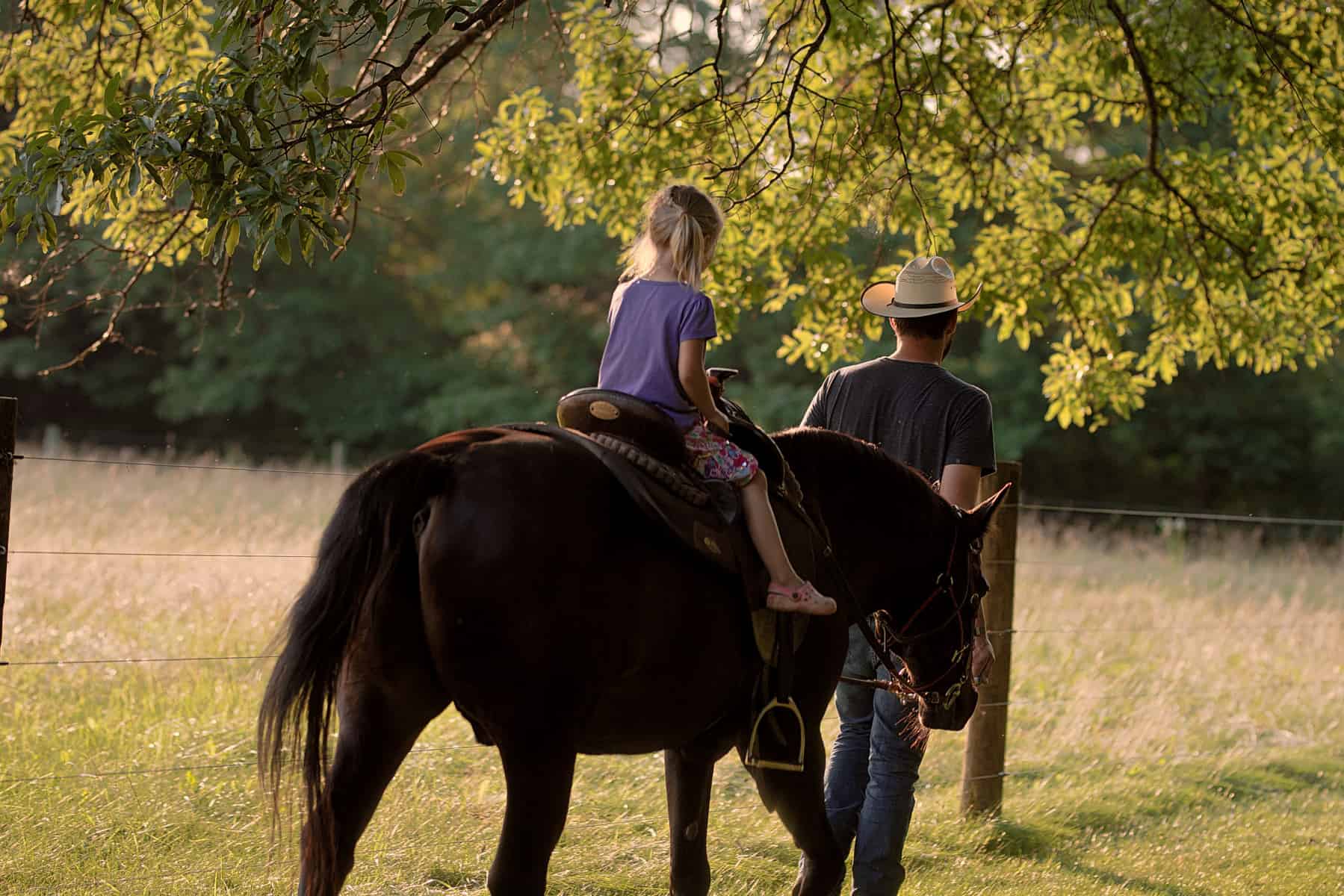
Kid-friendly breeds
Some breeds of animals are just more tolerant and better for families with kids. Others can be more high-strung and irritable. When you’re looking for a pet, do some research about what breeds might best fit with your family. This article highlights some of the most family-friendly dog breeds.
From dogs to chickens to cows, there are major temperamental differences from breed to breed. I once raised a steer for a 4-H project who remained unmanageable his entire life. We learned later that his breed was known for being skittish and wild. He simply was the wrong breed for a kid to work with, and I never succeeded in gentling him. I’ve even learned that some chicken breeds are better for kids than others. You can do a google search for the best kid-friendly breeds of any animal you might be considering.

Respect an animals’ space
One of the animal safety rules my parents instilled in us was that you should never, EVER get in a dog’s face. Even though I knew that very well, as a little girl, one time I started messing with my beloved pet dog, getting right in her face, and she bit me. Although she was a trusted, tolerant pet, she had had enough. I was pushing her buttons, and she let me know it. I wasn’t very old, but that lesson has stayed with me throughout my entire life. Stay out of an animal’s face, and respect its space. Even a very tolerant pet may snap at a child if it’s had enough foolish behavior.
And along those same lines, never tease an animal. Sometimes kids don’t realize that an animal cannot understand teasing. Not only is it cruel, but it could be dangerous. An animal who is being teased and tormented is very likely to forget its training and instinctively respond to unkindness with irritation.

Safety with strange animals
There’s a world of difference between a pet you’re familiar with and a strange dog you meet walking down the road. It’s really important to teach children to maintain a cautious, respectful distance. Never, ever, run towards an animal you don’t know! Approach slowly and with caution. If the animal is with its owner, always ask the owner if you may pet it before reaching out to the animal.
Dogs roaming free without an owner probably scare me more than any other kind of animal. My parents always taught us that if a strange dog came running up to you, you should try to “make like a tree.” Stand still, holding your arms perfectly still by your sides. Don’t scream or run away. As a kid, I never had to use this advice, but as an adult, I still remember it. Your best defense against an aggressive dog is to show no fear and remain calm.
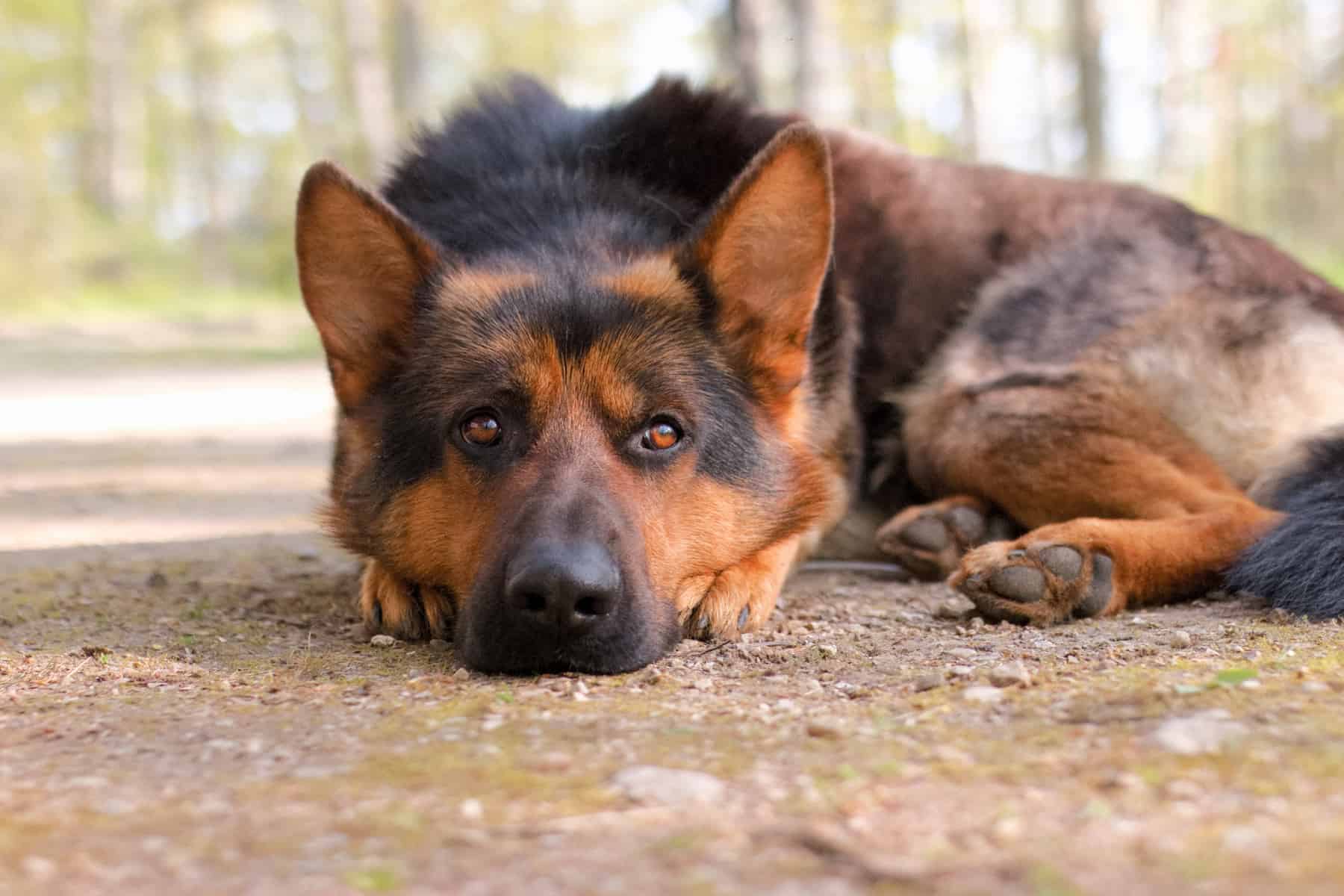
Safety tips when approaching strange dogs with kids
Most of my experiences with strange dogs have come in my years as a mom, when a barking dog has run out aggressively as I walk with my kids, a stroller, and our own dog. In these circumstances, I’ve found myself turning into Mama Bear. I don’t become a tree—I go on the offense. My children are always scattered up and down the street on bikes, and usually, I have one in the stroller. I know our huge dog (who’s a big baby normally) would fight a dog if it attacked us, and I’m terrified of my kids being caught in the middle of a dogfight, or getting harassed by an aggressive dog. With invisible fences, it can be very hard to know how close a dog will get to you when they come charging. And it’s oftentimes not for the faint of heart.
In this situation, I find myself yelling at the strange dog in the fiercest tones I can muster, “GO HOME! NO! GO HOME!” It actually works. If I can find and grab a stick quickly, I wave that, also. Although I’ve been nipped at a couple times, none of the kids have ever gotten hurt and our dog always acts perplexed at the stupidity of an animal that would come charging out to attack us. Oftentimes, the loud noise, yelling and barking attract the attention of the homeowner, who will let the dog in.
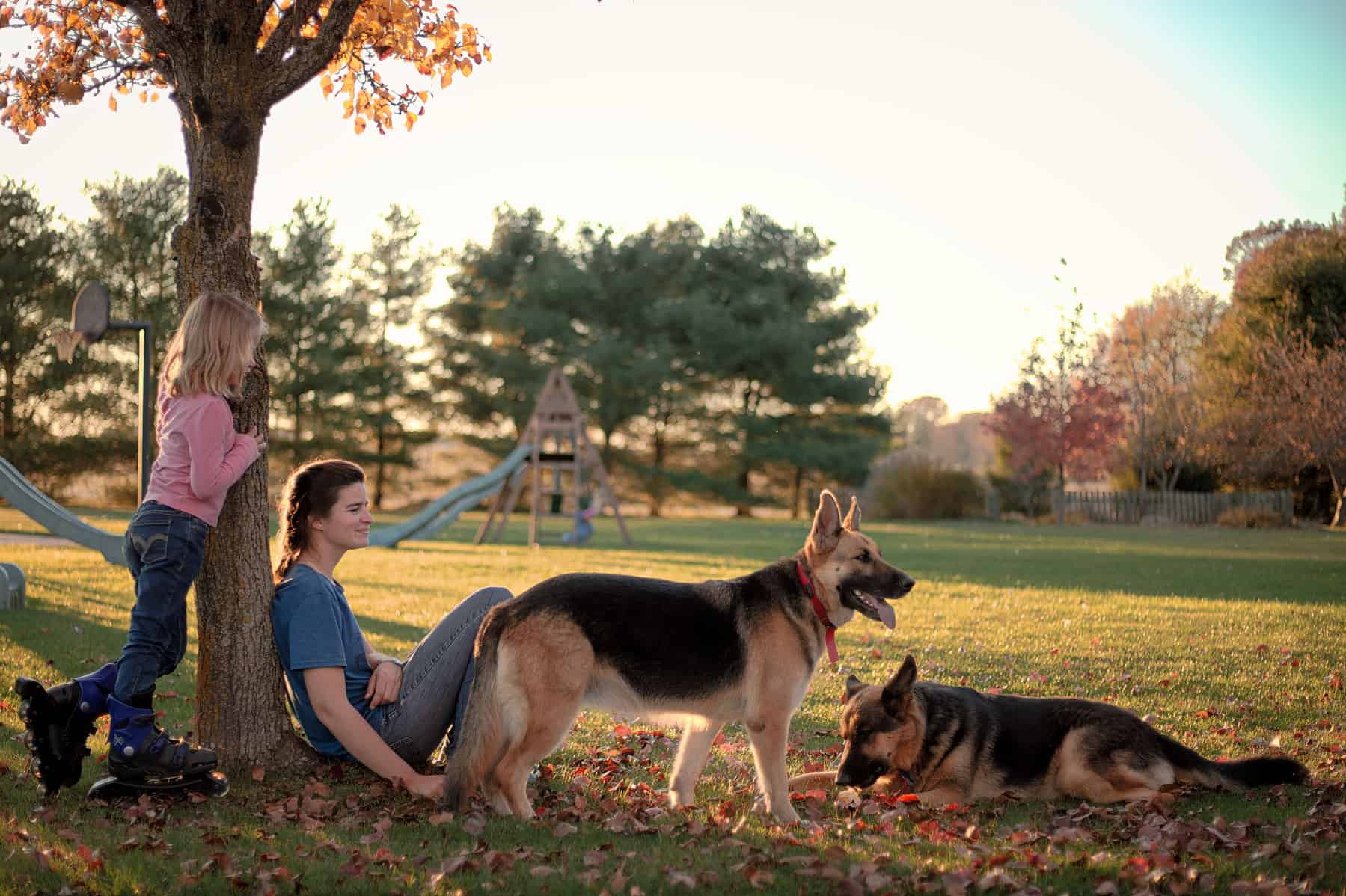
Hygiene and animal safety
As a mom, one big concern I have about my kids’ safety with animals is hygiene. Let’s face it—animals can be filthy. They can carry some nasty stuff. And my kids aren’t always the cleanest, either! But teaching them some basic hygiene goes a really long way.
A good hand-washing will eliminate those harmful bacteria and parasites. My parents drilled this into me my whole growing-up years: WASH YOUR HANDS. If you’ve been petting the dog, wash your hands. When you’re coming in from the barn, wash your hands. After you’ve changed your pet’s water, wash your hands. It’s so basic, but it really solves a lot of problems.
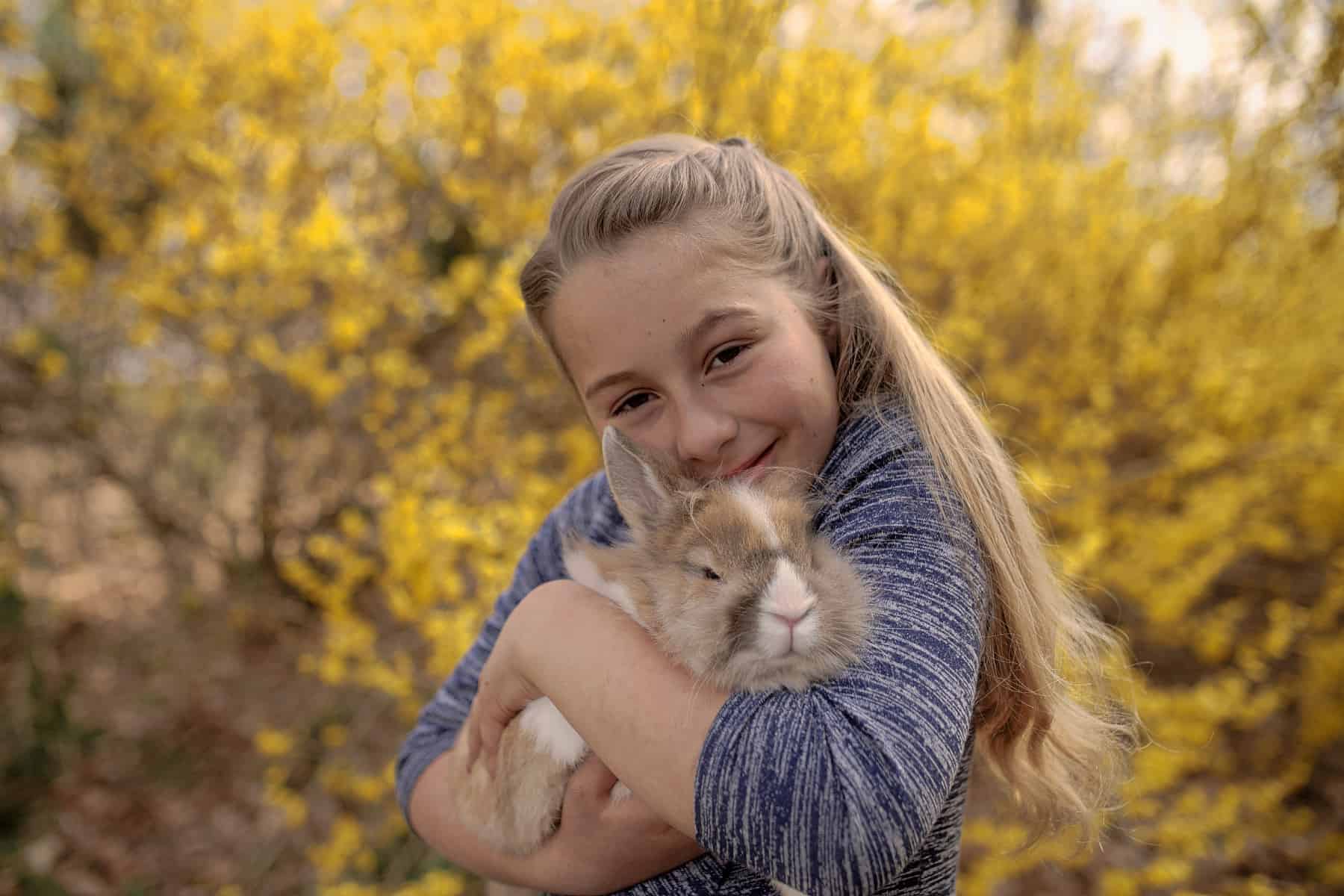
Kid hygiene
Now, I know my kids forget stuff. And this hand-washing thing worries me when they’re handling animals. It was one thing when most of our animals were outdoors animals. It seemed easier to have them wash as they came inside, or before meals. But, this took a whole new level of importance when my son got his bearded dragon. Anyone who reads anything about bearded dragons (or other lizards) will come across the dreaded word “salmonella.” That freaked me out! Fortunately, in all his own research, my son learned the great importance of hand-washing, both for his own health and his lizard’s. So he took charge of the hand sanitizing and carefully supervised every hand that touched his pet, before and after.
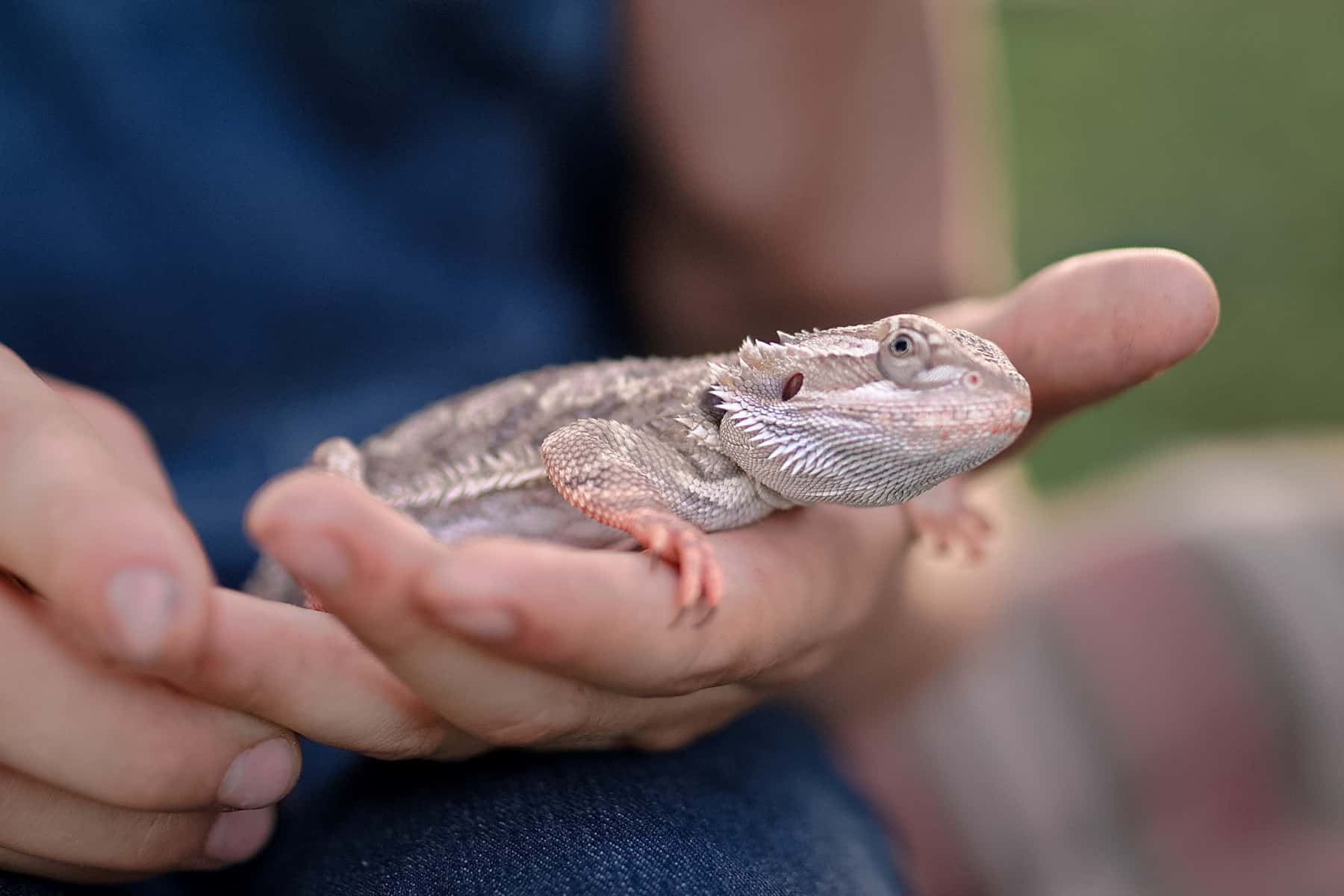
Hand washing for the win
Hand-washing reached a pinnacle of significance when we adopted some kittens this spring. We found them in my dad’s hay barn and their parents were feral cats. The kittens were too little to deworm or vaccinate yet. And we were holding and feeding those kittens all the time. So, I instilled in my children a great horror of the diseases they could bring upon themselves if they forgot to wash their hands after handling the kittens.
I must have done a thorough job of terrifying them because they religiously washed their hands (and still do). And no one caught anything dreadful from the kittens, who have now been appropriately dewormed and vaccinated. That eases my mind quite a lot. I still consider hand washing important, but at least I know we’ve eliminated some of the health problems our cats could pass on to our kids.

Pet hygiene
That brings me to the other side of this hygiene topic: pet hygiene. If you are bringing pets into your home, it’s really important that you cover some basic disease/parasite prevention measures. Your vet will help you know what to do and when, but most pets need regular vaccinations and deworming.
A good flea/tick prevention medication is also important for not only your pet’s health, but to protect your children from being exposed to fleas and ticks from your pet. Thankfully, all these products are readily available and do so much to keep your pet healthy and free from diseases. In turn, your pet is a safer companion for your kids.
One more thing I’d like to address is that very few viruses pass between humans and animals. If your dog is throwing up, or your cat’s eyes are runny, you need to care for the pet’s health—but you don’t usually need to worry about your children catching what the animal has. Proper vaccination and deworming, along with good hygiene practices, will eliminate most of the things you can catch from a house pet.
Along with hand-washing, other important hygiene habits would include not kissing your pets on the mouth, not letting them drink from your cup or the toilet, and keeping their litter box/bathroom area clean.
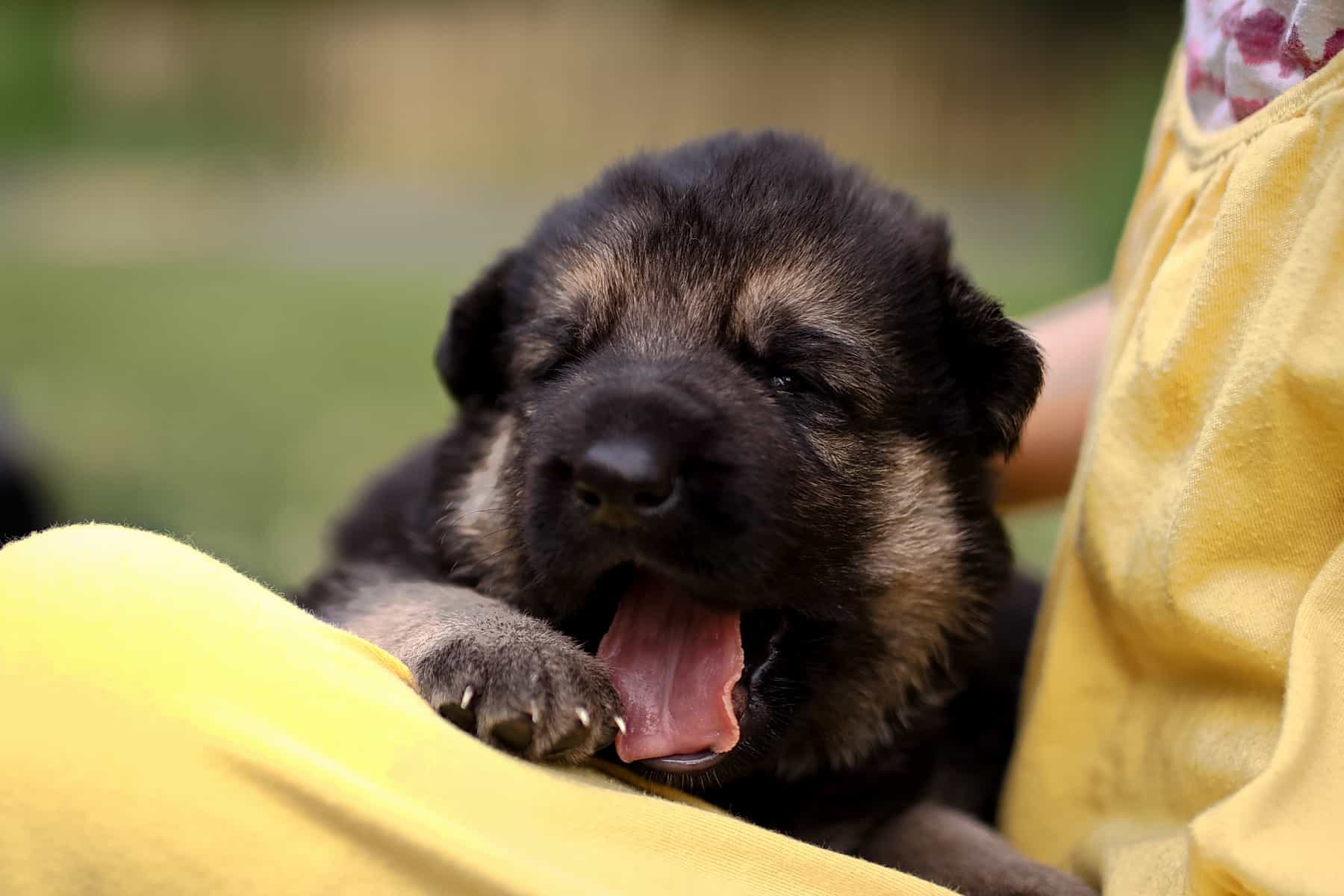
What about animal allergies?
Unfortunately, sometimes allergies are a major animal safety concern with kids. Many parents think their children can’t have pets because they have allergies. This is definitely an obstacle, but it may be possible to overcome! Not all pet dander is created equal. A child who cannot tolerate cat hair may be perfectly fine with a dog. Many kids with allergies can still live with a non-shedding animal, such as the dogs described in this list. A bird might not work for a child with dust allergies, but maybe an outdoor rabbit or even a tank of goldfish would be okay.
Talk to your child’s doctor if you have concerns about allergies, and see if they can help you come up with some kind of animal companion for your child.
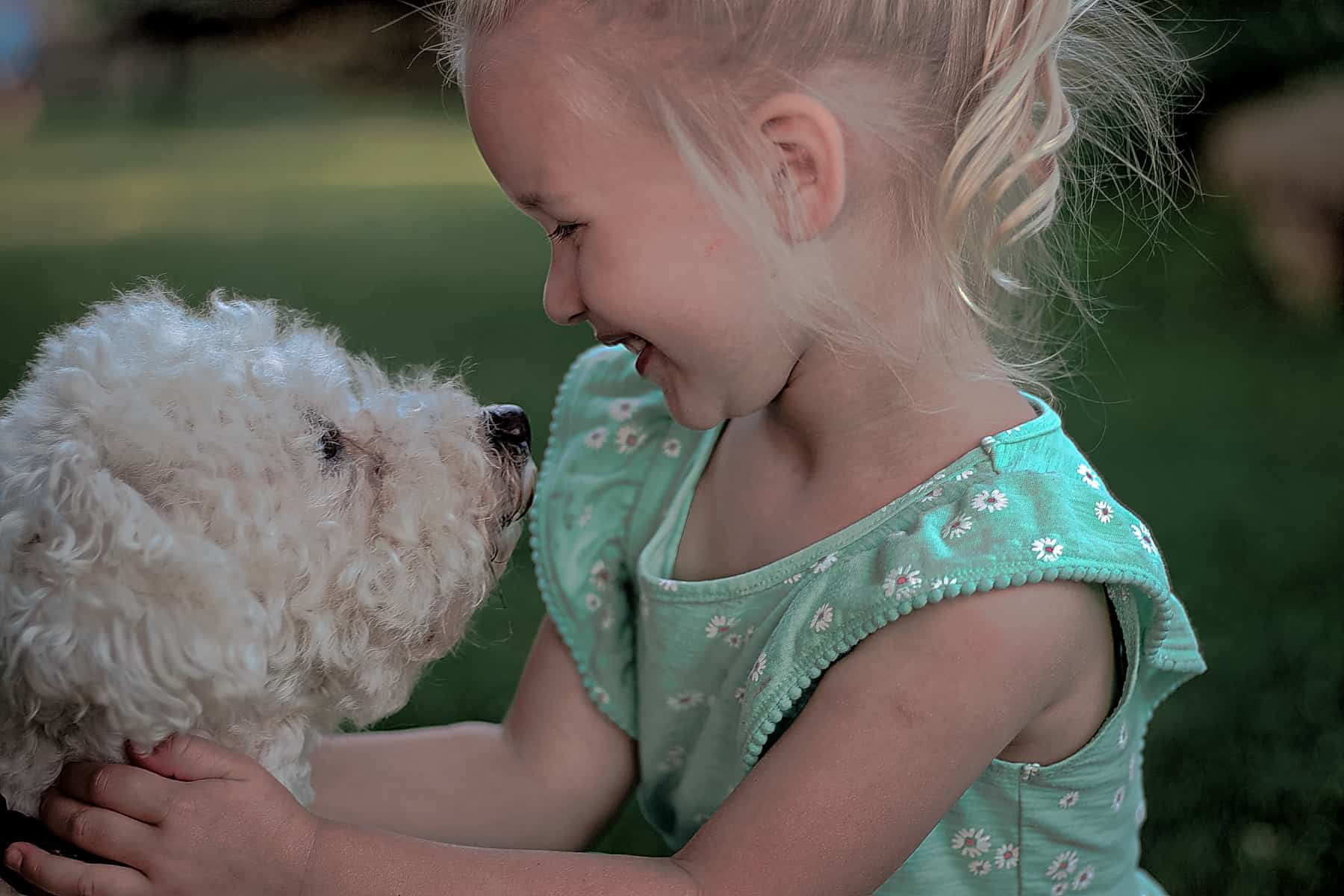
Animals are amazing
Pets enrich our children’s lives in so many ways, and it’s worth the extra work on our part to safely give them the companionship, responsibility, and unconditional love of an animal friend. If we can educate our children on the proper way to handle and interact with animals, we can open the doors for a lifetime of happy and healthy relationships with pets.
How have you handled safety concerns with animals and your kids?

About the author
Leslie is an Ohio farm girl and chaser of light, children, and sometimes chickens. She’s a lover of Jesus, wife to her high school sweetheart, and a homeschooling mom of four wild rascals who love the great outdoors as much as she does. As a family, they love hiking, camping, fishing, and just about any outdoor activity. She and her husband are just beginning the process of building a homestead from the ground up, doing most of the work themselves. Leslie has a lifelong obsession with writing and capturing everyday life from behind the lens. You can follow along with their homesteading, homeschooling, and everyday adventures on her Instagram account.
You can find more from Leslie in the following locations:
Instagram: @c_l_allofus
Client work: @lalvisphotography
Leslie’s RWMC posts:
Comments
3 responses to “Animal Safety with Kids”
[…] not people. As lovable and cute as they are, they still have protective instincts, and there are measures that should be taken to ensure children are safe around the dogs and vice […]
Where are you located?
[…] builds their confidence and keeps the parrot comfortable. Keeping cages clean and regular vet visits10 are key to stress-free interactions. This way, both the child and the bird stay […]

Leave a Reply